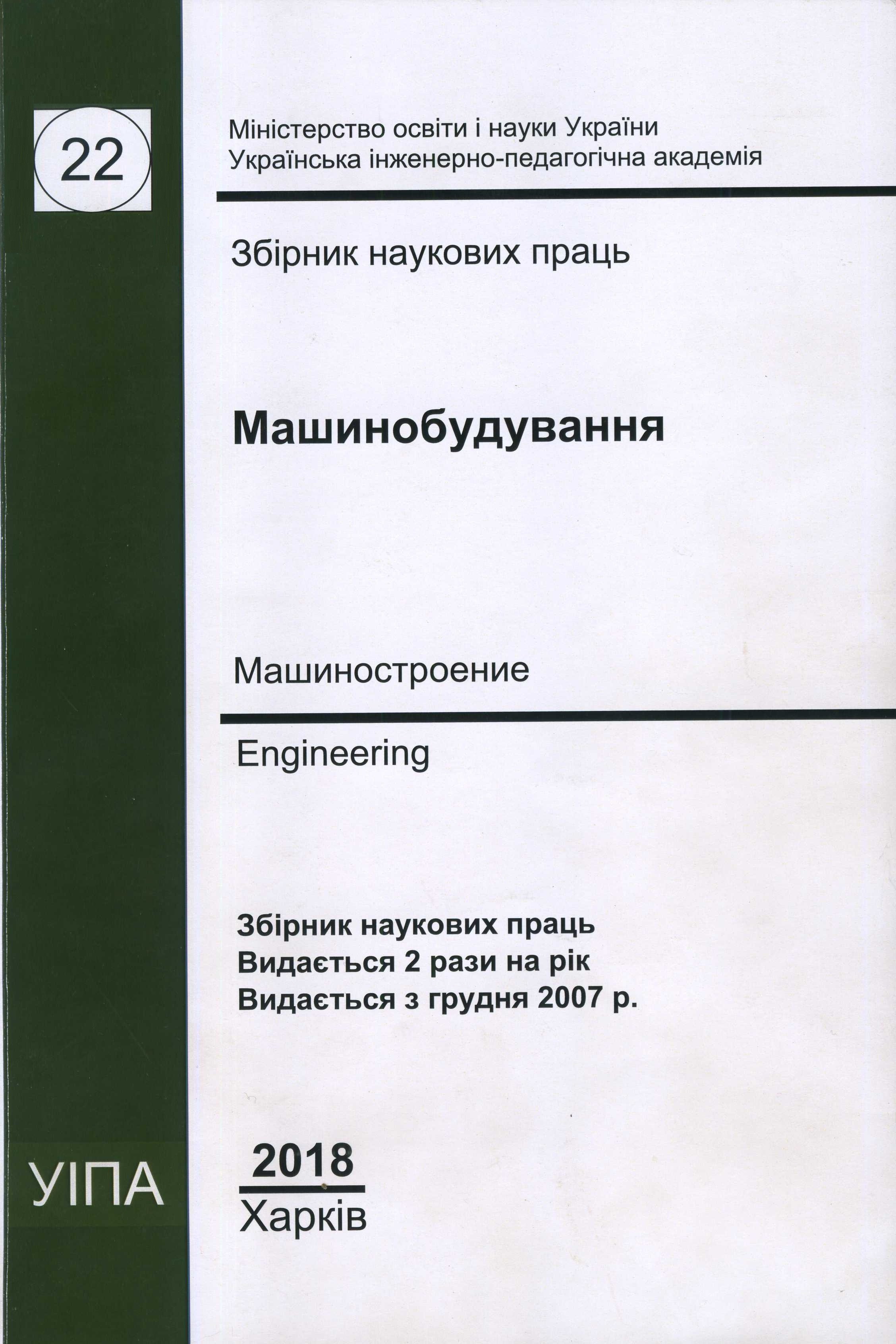The study of the removal of the diamond layer of a circle under the influence of single electrical discharges
Abstract
DOI: 10.32820/2079-1747-2018-22-41-48
The work investigated the features of the formation of holes on the surface of a bunch of
grinding wheels. The impact of electrical discharges on the ligaments of groups 2 and 4 causes the
formation of modified surface layers with enhanced mechanical properties that contribute to a more
durable retention of the grains. The main factors affecting the thickness of the modified layer are
the energy of the pulses, the speed of movement of the tool and the amount of fluid supplied to the
dressing zone. In bundles of group 1, due to the low value of the Palatnik criterion, the electroerosion effect forms a very developed relief, the protrusions of which can be larger than the grains.
In bundles of group 3, including non-conductive components, discharges with an energy of more
than 0.05 J cause the appearance of cracks. Therefore, the tool on the bundles of 1 and 3 groups
must be corrected with an energy of impulses not exceeding 0.05 J. An electrical discharge, acting
on the cutting surface of the tool, has a side effect on the diamond grains. As a result of thermomechanical and other impacts, the grain surface is covered with additional elements in the form of
steps with sizes of 5-15 microns. Thus, diamond grains, after being subjected to discharges, acquire
a much more developed surface, which increases the cutting surface of the tool.
Downloads
References
Tosua G & Muratoglu, M 2004, ‘The drilling of an Al/SiCp metal-matrix composites. Part I Microstruc- ture’, Composites Science and Technology, iss. 64, pp. 299-308.
Kopac, J & Krajnik, P 2006, ‘High-performance grinding: a review’, Journal ofMaterials Processing Tech- nology, iss. 175, pp. 278-284.
Kim JD, Kang YH, Jin DX, et al. 1991, ‘Development of discontinuous grinding wheel with multi-porous grooves’, Int JMach Tool Manu, no. 37, pp. 1611-1624.
Gutsalenko, Yu, lancu, C & Bratan, S 2015, ‘Exploitative destruction features for detonation ultra- dispersed diamonds of initial metallic protection for abrasive powder grains to diamond-spark grinding tools’, Fiability & Durability, Supplement no. 1(14), pp. 3-8.
Gucalenko, JuG 2012, ‘Almazno-iskrovoe sNifovanie: obzor sorokaletija razrabotki harkovskoj nauchnoj shkoly fiziki processov rezanija’, Fizicheskie i kompjuternye tehnologii v narodnom hozjajstve, Gosudarstvennoe predprijatie Harkovskij mashinostroitelnyj zavod FJeD, Harkov, pp. 79-88.
Strelchuk, RM 2011, ‘Vyznachennia osoblyvostei ta ratsionalnykh umov almazno-
iskrovoho shlifuvannia tverdykh splaviv z nanorozmirnykh zeren monokarbidu volframu’, Kand.tech.n. thesis, Natsionalnyi tekhnichnyi universytet Kharkivskyi politekhnichnyi instytut, Kharkiv.
Ivanov, NP 1984, ‘Jelektrojerozionnoe formirovanie vysoty relefa rabochej poverhnosti almaznyh krugov pri ispolzovanii istochnika postojannogo toka’, Rezanie i instrument, iss. 32, pp. 21-27.
Novikov, FV & Jakimov, AV 2002, Fiziko-matematicheskaja teorija processov obrabotki materialov i tehnologii mashinostroenija, Vol. 4 Teorija abrazivnoj i almazno-abrazivnoj obrabotki materialov, Odesskij nacion- alnyj politehnicheskij universitet, Odessa.


